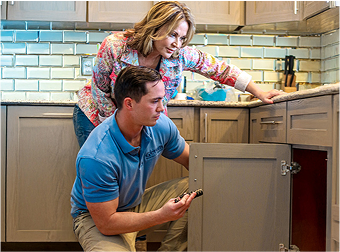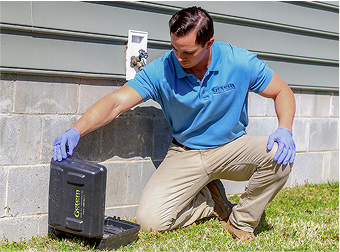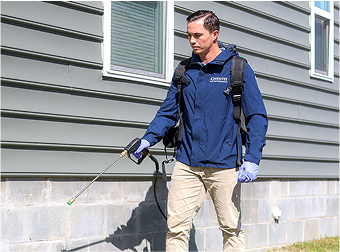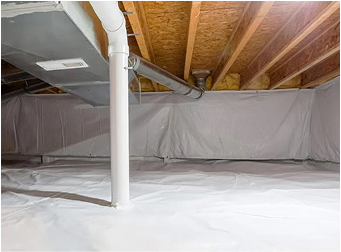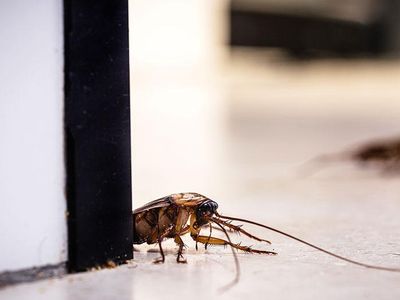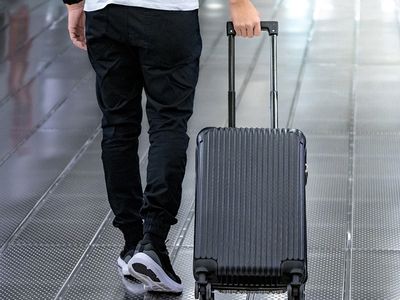Do I Have Bed Bugs?
Identifying the signs of a bed bug infestation
According to a survey conducted by the National Pest Management Association several years ago, one in every five Americans has experienced a bed bug problem in their home or knows someone who has. While there hasn’t been a survey completed lately, it’s likely that number has not dropped. In fact, there’s been a lot of discussion across the pest control and hospitality industries about the uptick in bed bug activity this year, and since this problem doesn’t show any signs of slowing down, we thought it a good time to focus on these biting pests and specifically how to tell if you have bed bugs.
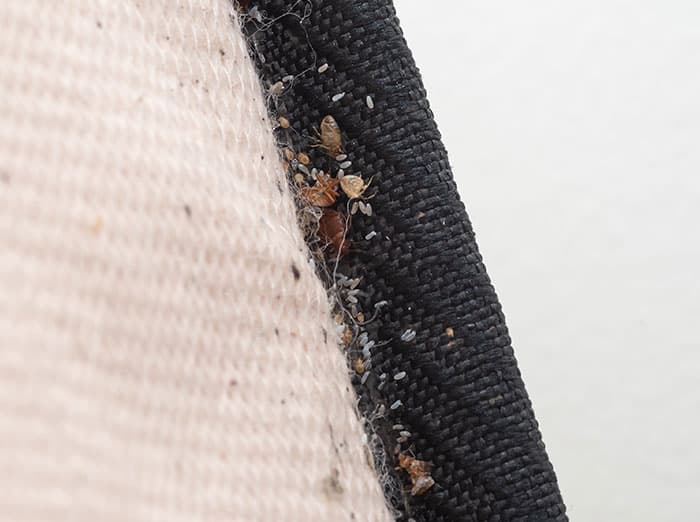
How do bed bugs spread?
Before we identify the signs of bed bugs, let’s discuss how these biting pests get into homes and businesses. You probably won’t like the answer, but here it is – any way they can! To elaborate, bed bugs are often introduced on people, their belongings, or on items they’ve used. What’s more, they are picked up in hotels, on airplanes, in college dorms, and anywhere people congregate. It has nothing to do with cleanliness and everything to do with the people coming and going.
How to tell if you have bed bugs
If you’ve recently been on vacation, entertained houseguests from out of town, welcomed your college student(s) home for the holidays, bought a used pieced of furniture, or even purchased secondhand books, there’s a chance bed bugs have been introduced. Really, the ways bed bugs can show up in your house is too numerous to list and honestly, it’s more important to know how to tell if you have a bed bug problem. With that in mind, here are the common signs of bed bugs:
- Bed bug bites
If you’ve woken up with red, itchy bites on your arms, legs, or other exposed skin, it could be bed bug bites. It’s important to note that bed bug bites can show up immediately, but may not appear for several days. - Adult bed bugs, nymphs & bed bug eggs
A more obvious sign of bed bugs is finding adult bed bugs and bed bug nymphs (smaller versions of adults) crawling around your bed, nearby furniture, or on your possessions. You might also see tiny, pearl-white bed bug eggs on mattress seams, box spring, and headboard as well as in other areas that are close to their food source (i.e., human blood). - Blood stains
Bed bugs are mainly active at night and that is usually when they take a blood meal. During that time, these bugs will become engorged with blood and so you may find blood stains on pillowcases and sheets. Blood stains may also occur if the occupants of the bed roll over and crush these pests as they feed. - Bed bug feces
Although bed bugs droppings aren’t as noticeable or obvious as rodent droppings, if present, you will know you have a bed bug infestation. Keep an eye out for feces that look like rust-colored spots on sheets, mattresses, and nearby furniture. - Bed bug exoskeletons
As bed bugs develop from egg to nymph to adult, they will shed their exoskeletons (or skin). Look for tiny, translucent shells in areas where they’re likely to hide. - Musty odor
If you detect a musty, sweet smell in the room you’re concerned about, it could be from bed bugs. This odor usually only accompanies large infestations, so you’d probably notice the signs of bed bugs listed above before you smell an infestation.
Where to inspect for bed bugs
Now that you know what to look for when it comes to bed bug activity, let’s take a moment to go over where to inspect for these biting pests. Using a flashlight (or your smartphone), check the following areas:
- Beds
Look over every inch of your bed for these bugs; this includes the box spring, mattress seams, headboard, and bedding/linens. - Nightstands & Other Furniture
Both wood and upholstered furniture may harbor bed bugs so be sure to check cracks, seams, and folds. You should also look closely at the heads of screws that keep your furniture together. - Walls, Baseboards & Carpeting/Flooring
Bed bugs will also hide in areas you might not think of, such as the junction where the wall meets ceiling, behind baseboards, under carpeting, and between the cracks of hardwood flooring. - Electrical Outlets & Other Miscellaneous Places
Bed bugs will hide behind the covers of electrical outlets, inside electronics, behind art on the walls, and even in curtains and other window dressings.
What to do if you find bed bugs
If your search for bed bugs confirms your suspicions, contact a bed bug exterminator right away! Here at Getem Services, we offer effective bed bug control in Virginia Beach, Norfolk, and throughout Hampton Roads. When you call us for help getting rid of bed bugs, we will send over a highly trained and fully licensed pest control specialist to perform a bed bug inspection. Once that’s done, we’ll communicate our findings, explain our bed bug treatment process, provide you with a bed bug control quote, and then schedule your service.
We do not treat bed bugs on the same day, but that’s only because there’s a bit of prep work homeowners must complete first in order to ensure optimal results. Don’t worry, we’ll provide you with instructions.
To exterminate bed bugs, we follow our proven bed bug protocol that includes:
- An initial bed bug treatment which may include a combination of conventional products, physical remediation, dusting, and steam
- A seven-day follow-up service to make sure our treatments were successful
- A fourteen-day follow-up to confirm that all stages of bed bugs (adults, nymphs, and eggs) have been eradicated
If your property qualifies, we will issue a 30-day bed bug warranty once we give the all-clear!
Don’t let the bed bugs bite, contact Getem today!
If you’d like more information about our bed bug control services or if you’re ready schedule a bed bug inspection, complete the form below or give us a shout!



